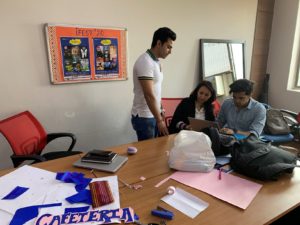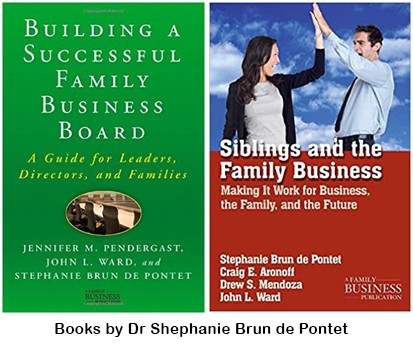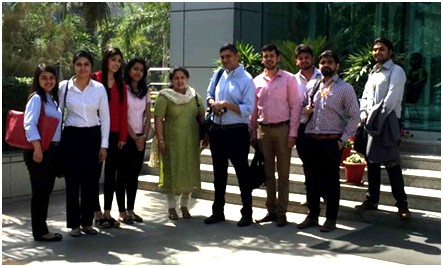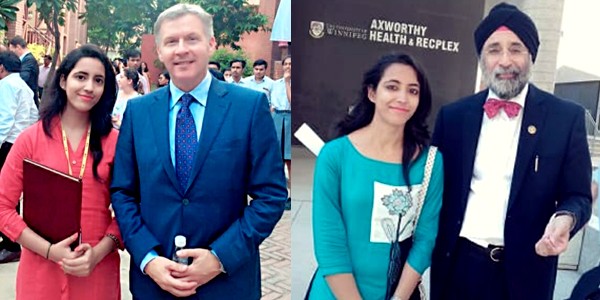Keywords: Sustainability. Zero waste patterns, zero waste, Pattern making
Limited resources and climbing cost have been the seeding ground for concepts that are new to our 21st century. Concepts like sustainable development, circular economy and ethical businesses have been focus of discussions for the past two to three decades. When applied for fashion design industry we are talking of how to save the resources in terms of limiting yarn and fabric wastage in current manufacturing process. The extent and amount of wastage is alarming in our factories and fabric wasted and discarded in cutting process is a matter of concern. It is a concern not only because it ends up in landfills, but also the fact that fabric is one of the main costing head of any garment. If we can save on fabric in Cutting Room of manufacturing unit it is a win-win situation for both maker and user.
It is estimated that as much as 15 percent of the fabric is wasted in any cutting plan. However, this was not so a few centuries ago. History is the evidence that limited resources were kept in mind while designing and making garments in any culture. Japanese Kimono dress is cut from rectangular shapes of Patterns which leads to zero wastage. Our traditional Indian garments like panelled skirt (Lehanga) and tunics for men and women (Kalidar Kurta) are some of the best examples of how not to waste fabrics in pattern cutting process. These garments were comfortable, gave interesting silhouettes and didn’t give up on the fitting aspects to the wearer. The saree is an excellent example of zero wastage in fabric – the saree is usable as soon as it comes off the loom, and you don’t need to cut or sew this classic costume of India. The versatile nature of this costume show possibility of a rectangular six yards of fabric draped in several styles on a woman’s body. Similarly, ancient costumes of Roman and Greeks were rectangles or circles that were draped around the body without much of cutting and stitching involved. People respected and took care that fabric which was made with so much of hard labour on hand operated looms, is put to the best usage.
Greek “chiton” for men and women were draped rectangular piece of fabric
Different Saree drapes
What can we learn from history of clothing? The zero waste concept was first coined in start of 21st C by Warren Snow in New Zealand in year 2000. Soon the concept caught on with US government programs for recycling at grass root level. Soon it caught on with Australia, Europe and Asia as well. In 2003 in Wales, Zero Waste International Alliance was discussed and formed with the mission to divert minimum 90 percent of waste from landfills and incinerators.
In Fashion Industry, Zero Waste clothing refers to little or no waste of fabric in their production. Before the garment reaches the consumer, we have to plan, design and manufacture garments in such a way that least of fabric and other resources are wasted. Patterns are the bridge between the fashion sketch and final garments. Hence, a Pattern maker is an import link in sustainable fashion chain. The usual process of Design as taught and practiced in design schools and industry is to sketch the idea of design from a trend and mood board, then the sketch goes to pattern master who makes the patterns of that style and cutting takes place as per the required design. However, once we flip the concept of making garment from design first to plan No-wastage first, we will notice that pattern planning comes as an important starting point. The fabric type and width is an important aspect and it has to be first considered as a deciding factor rather than final silhouette. The process becomes more logical than inspirational, as we usually are flexible in making our designs more in tune with our goal of not wasting any fabric. Another idea that is catching on is to recycle the strips of old garments or surplus fabric pieces into strips which are then again woven, crocheted or inter-laced into new garments.
Many designers use the draping technique to arrive at garment designs than sketching to start with. In this technique, you drape a piece or pieces of fabric on the dress form to make 3 dimensional garments straight on a dummy. The approach is open ended and gives room for experimental drapes and unusual functional details. Another approach is to weave that much panel of patterns that is required – Direct panel on Loom, it is something like whole garment system where yarn is fed into the machine and out comes the garment – No fabric is produced and yarns make directly the shapes of panels or patterns required for the garment. These techniques are expensive and not many can afford its cost.
Some famous designers who have worked with zero waste in their design approach are – Zandra Rhodes, Julian Roberts, Holly McQuillan, and Siddharth Upadhdhya for his Direct Panel on Loom approach.
Zandra Rhodes was one of the pioneers in the zero waste concept in the British fashion scene. Her simple, geometrical cuts are famous with celebrities. Julian Robert is an exponent of zero waste throughout the process of design, Cut and make through his inventive method of pattern cutting called “Subtraction Method”. He starts with less of planning and more of creative risk, cutting the fabric, manipulating on dummy and sewing in unusual ways. Here, in his own words –“Design comes last, not the first” and one enjoys the accidental innovations in the process.
“It (Design) is discovered by chance at the end of the prototyping process, not at the beginning where it would be a limitation or precondition. So to me ‘designing’ is making, it’s not making a pretty picture and then passing it on for more skilful hands to realise and bring it to life” – J. Roberts in an interview on January 30, 2019.
(source: https://subtractioncutting.tumblr.com/post/132676352496/vocal-reverse-subtraction-cutting-lecture-today)

Holly McQuillan wrote the first book on this concept in 2016- Zero Waste Fashion Design, whereby she expresses her concern that problem is bigger than we think. A prominent personality in Sustainable fashion, she continues to research and teach the same to her students at Massey University, NZ.
Julian Roberts draped dress using Subtraction Method
Many young designers are adopting this concept in their brands. One of the interesting one is Dr. Mark Liu who applied mathematical equations to make patterns in such a way to save onto a lot of fabric being wasted. Karen Glass is another one to be inspired from. She hunts scraps from various factories and joins these pieces in an artistic way to make forever fashionable ensembles. Daniel Silverstone is working on same lines – to join pieces that are discarded into new patterns that make it look artistic and one of a kind.
Denim pieces patchwork by Daniel Silverstone
The functional need gives rise to design intervention. The function remains top priority. The less is wasted, the more is saved of every resource – labour, money invested, materials, ideas; and, most importantly, there is always so much already produced in society, can we not reuse that itself?
Circular economy as a concept can be a reality for every business. Given the risks in supply chain and system becoming too complex, we need simpler strategies to solve issues. We should not be making new solutions to solve a problem that existed due to a failed solution. That is a never-ending game, and we can see the repercussion of over-dependence on systems now. Basically, we should stop passing bucks – “my waste is government’s responsibility, Or, what consumers do with their clothing is not my concern”, etc. etc. The time has come to take responsibilities and contribute for everyone’s well being rather than being self centered as a business strategy. And, clever planning to reduce waste of fabric is one small step for a big issue facing our garment industry today.
Website References:
1. https://thefashionadvocate.com/blogs/news/julian-roberts-is-an-avid-sustainability-advocate-the-inventor-of-subtraction-cutting
2. https://eluxemagazine.com/fashion/zero-waste-designers/
3. https://textilevaluechain.in/2020/03/12/zero-waste-pattern-cutting/
4. https://www.modopactua.com/pdf/LEARN_Zero-waste_ENG.pdf
5. https://hollymcquillan.com/category/sustainable-design-practice/zero-waste/page/2/











 Core purpose is an organisation’s most fundamental reason for being. It should not be confused with the company’s current product lines or customer segments. Disney’s core purpose is to make people happy – not build theme parks and make cartoons. Theme parks or cartoons or any other product will flow from the core purpose.
Core purpose is an organisation’s most fundamental reason for being. It should not be confused with the company’s current product lines or customer segments. Disney’s core purpose is to make people happy – not build theme parks and make cartoons. Theme parks or cartoons or any other product will flow from the core purpose. Giving example of a company and how it has adapted its business in the current corona crisis by reinventing itself she spoke about J W Lopes, a 4th generation family owned suppliers of produce and dairy to restaurants and institutions. It has changed its business model shifting from institutions to residential distribution by configuring the new way of distribution channel. The company has rightly assumed that people are spending more time trying out new dishes at home and that they would like to have new fresh produce and dairy products. New ideas and experimentation are needed to survive and thrive in the new normal.
Giving example of a company and how it has adapted its business in the current corona crisis by reinventing itself she spoke about J W Lopes, a 4th generation family owned suppliers of produce and dairy to restaurants and institutions. It has changed its business model shifting from institutions to residential distribution by configuring the new way of distribution channel. The company has rightly assumed that people are spending more time trying out new dishes at home and that they would like to have new fresh produce and dairy products. New ideas and experimentation are needed to survive and thrive in the new normal.
 1. Altruism: It can be defined as discretionary behaviours that have the effect of helping a specific colleague with an organizationally relevant task or problem.
1. Altruism: It can be defined as discretionary behaviours that have the effect of helping a specific colleague with an organizationally relevant task or problem.


 We were exposed to industry and their working style as IILM regularly organized industry visits, conferences attended by industry leaders, invited international guest faculty and internships. All these activities made us corporate ready by increasing our understanding of how the real-world works. The learning in the classroom and beyond had a long-lasting impact on my professional choices, decisions, and journey.
We were exposed to industry and their working style as IILM regularly organized industry visits, conferences attended by industry leaders, invited international guest faculty and internships. All these activities made us corporate ready by increasing our understanding of how the real-world works. The learning in the classroom and beyond had a long-lasting impact on my professional choices, decisions, and journey.





